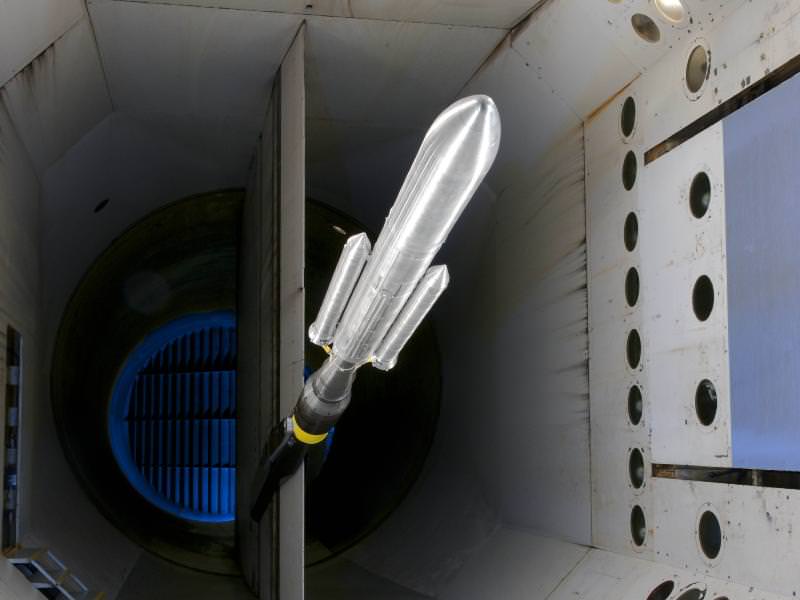NASA’s Space Launch System buffet model in NASA’s Langley Researcher Center’s Transonic Dynamics Tunnel. Image credit: NASA/LaRC
This week, researchers tested a ten-foot-long model of the new Space Launch System, NASA’s next big thing for launching humans beyond Earth orbit. The test was conducted at the Langley Research Center’s Transonic Dynamics Tunnel (TDT).
“This is a critical milestone for the design of the vehicle,” said Langley research engineer, Dave Piatak.
Data retrieved will help prepare SLS for its first mission in 2017, Exploration Mission-1 (EM-1), which will deliver an uncrewed Orion spacecraft to lunar orbit to check out the vehicle’s systems. But before SLS’s first flight, the safety vehicle must be demonstrated through analysis and testing. An important step in ensuring a safe flight to orbit is buffet wind-tunnel testing to help determine launch vehicle structural margins.
To do this, a wind-tunnel model is put through its paces at transonic and low supersonic speeds reaching up to Mach 1.2. Testing aerodynamics at these speeds is essential to understanding the structural interaction to the flow field around the vehicle and determining loads on the flight vehicle.
360 miniature sensors on the model’s surface are scanned by a data acquisition system scanning at thirteen thousand scans-per-second. Unlike the rigid SLS buffet wind-tunnel model, the real launch vehicle is quite flexible. The rocket will bend and shake in response to forces during flight, and engineers use tests like this to determine that the resulting bending loads and vibrations are within the launch vehicle’s safe limits.
NASA engineers are now analyzing the data, and will be used to help refine the design of the SLS vehicle before the full-size rocket is built for flight tests. After completing EM-1, SLS will perform its second mission in 2021, Exploration Mission-2, launching Orion with its first crew of astronauts to demonstrate orbit around the Moon.
Source: PhysOrg


Was this “EM-1” Mission top~secret until today?
I read about EM-1 several times before over the last months – so no, it was not top-secret. (But then again I would say they could do better PR work about what they do.)
I’ve got to say that I have a hard time getting excited about NASA spending its budget on developing a SHLV when SpaceX seems to be doing such better job of it for so much less money. I feel like if NASA gave a third that much money to subsise Elon Musk he could have it done in half the time and cut the per-launch cost by 75%
Sure it will have a billion times the computer processing power, the parts will be designed on a computer, it will use composites undreamt of then and the engineering tolerances will be 1000 times better but it still looks like something out of a 60s comic book.
SLS = Senate Launch System the latest NASA boondoggle which exists solely to support jobs in congressional districts. Each launch would be prohibitively expensive but not to worry as it like many failed NASA launch systems will never fly.
The $ wasted on this pork program could easily fund the massive cutbacks in the Obama administration’s planetary exploration budget.